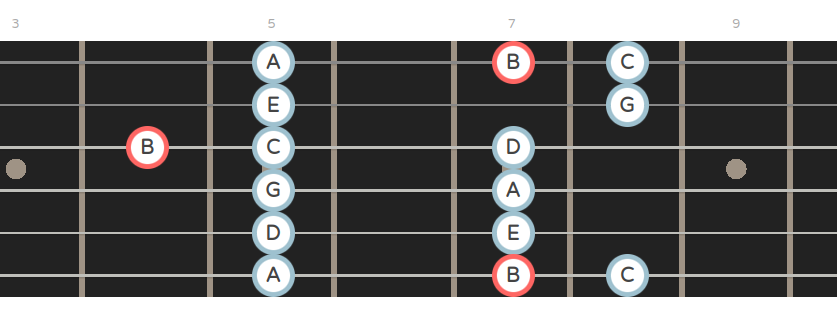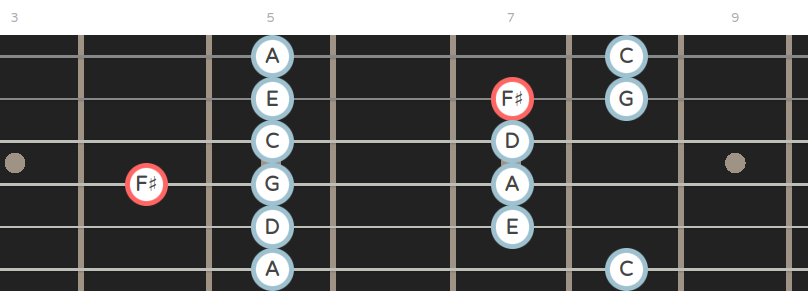on
2 easy ways to add richness and complexity to the minor pentatonic scale
For many guitar players, the minor pentatonic scale is one of the first scales they learn on the guitar, and one of the ones they regularly rely on when improvising and writing solos and melodies. Most will be familiar with one position in particular, which in A minor looks like this:
The minor pentatonic is versatile and memorable. It benefits from sounding great over both a major and minor blues chord progression thanks to the pleasant clash of major and minor third. It is also usable over every chord in those progressions. But its ease of use and reliability can become a crutch and many guitar players find they want to embellish their playing.
Many initially do this by adding the flat 5, the so-called “blue note” or the major 3rd. Both of these add a bluesy feel because of the clash of major and minor tonalities. Here are two more ways you can add notes to the minor pentatonic.
The Major 2nd
The Major 2nd is the second note of the major scale. It’s one of the easiest notes to mix into a standard blues progression because it’s present in both the major and minor V chords and can also build tension before the IV chord when it’s played as a 7th chord, because it contains a note a half-step up.
In the A minor pentatonic scale, which consists of the notes A, C, D, E and G, the major second is B and is located in the first box here, marked in red:
It’s no big surprise that the major 2nd is easy to use with the minor pentatonic - it’s the same note in both the major and natural minor scales!
The major second can be used in many ways in both major and minor keys. It can be bent up a semi-tone nicely to the 3rd, making it a great leading note. It is also reliable as a passing note, thanks to its strong consonance with the other chords in a standard blues.
The Major 6th
Unlike the major second, the major sixth note is a little harder to work with. But this also gives it a more interesting and complex effect when used correctly, as it can emphasize or imply a note that isn’t present in the accompaniment.
In the A minor pentatonic the major sixth note is F♯ and is located in the first box as shown below, in red:
Whereas minor notes often sound bluesy when played in a major key, the same is not true of major notes in a minor key and so it is hard to get the F♯ to work in a minor blues chord progression, especially where minor 7th chords are involved. It’s primarily of interest as a chromatic passing note.
However, in a major chord progression, such as A7-D7-E7, the major sixth really shines. In particular, it can be used very effectively over the D7 chord. When accompaniment is subtle, or in a solo guitar setting, it can be used to accent the transition from the I to IV and from the V back to the IV during a regular 12-bar blues.
Over other chords in the progression it can be used as a passing or leading note, in bends and slides or as part of a melody. But reserving its use for the IV chord will add extra punch and emphasis to the harmonic progression.
Experimenting with additional notes
The major second and major sixth notes are versatile and easily added to your repertoire. They can add harmonic richness to your improvisation and compositions. It’s easy to get a feel for when they should be used. When combined with other additional notes to the pentatonic scale, such as the flat fifth or major third, can be used to create long chromatic runs that land on an appropriate note. In short, they can help make your playing more interesting!
To experiment with how these notes work with chords, try opening a blank fretboard on AnyFret and drawing in the minor pentatonic scale in a position you’re familiar with. Then you can experiment with adding additional notes and draw in chords to see how the notes fit into progressions.

